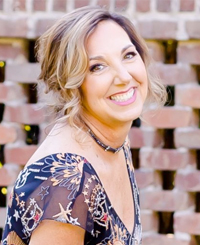Lorraine Miano, NABBW’s Holistic Menopause Health Associate, Shares News on How to Prevent or Reverse Post-Menopause Osteoporosis
By Lorraine Miano, NABBW’s Holistic Menopause Health Associate
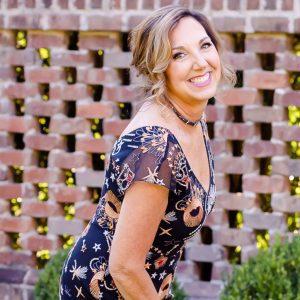 My recent osteoporosis diagnosis felt like a sucker punch to the gut. It was totally unexpected and left me wondering how and why did this happen? As a health and menopause coach, I felt I was doing all the right things by exercising regularly, eating a healthy diet, limiting alcohol and caffeine, and taking my supplements. I knew I might be at higher risk since I am post-menopausal, small-boned, and chose not to use hormone replacement therapy due to personal reasons. However, I felt I was doing well, especially since my first bone density test in 2014 was excellent.
My recent osteoporosis diagnosis felt like a sucker punch to the gut. It was totally unexpected and left me wondering how and why did this happen? As a health and menopause coach, I felt I was doing all the right things by exercising regularly, eating a healthy diet, limiting alcohol and caffeine, and taking my supplements. I knew I might be at higher risk since I am post-menopausal, small-boned, and chose not to use hormone replacement therapy due to personal reasons. However, I felt I was doing well, especially since my first bone density test in 2014 was excellent.
What I only discovered within the last 2-3 years, is that my doctors should have been guiding me with preventative measures including taking Vitamin K2 with my D3. After my research on K2, I immediately began taking it. More on that later. Apparently, it was just a bit too late to prevent my osteoporosis diagnosis. According to PubMed, “Postmenopausal women are susceptible to primary osteoporosis since osteoporosis is closely related to estrogen deficiency. During the menopausal transition period, the drop of estrogen leads to more bone resorption than formation, resulting in osteoporosis.”
For many women, HRT (hormone replacement therapy) can help with mitigating bone loss, especially if started during perimenopause. This is a discussion to have with your doctor, as there are certain risks depending on your genetics, health history, and age.
Osteoporosis literally means “porous bones.” It is a disease where bones can become thin and weak. Since it has no obvious symptoms, a woman may not discover she has osteoporosis until she suffers a fracture. Osteoporosis has reached epidemic levels in the United States.
Facts From the National Osteoporosis Foundation (NOF.org):
- Being female puts you at risk of developing osteoporosis and broken bones.
- Of the estimated 10 million Americans with Osteoporosis, about 8 million or 80% are women.
- Approximately, one in two women over age 50 will break a bone due to osteoporosis.
- A woman’s risk of breaking a hip is equal to her combined risk of breast, uterine and ovarian cancer.
More startling statistics:

The importance of weight-bering exercise cannot be underestimated.
According to the Centers for Disease Control and Prevention, “One of the most serious fall injuries is a broken hip. It is hard to recover from a hip fracture and afterward many people are not able to live on their own. As the U.S. population gets older, the number of hip fractures is likely to go up.
- Each year over 300,000 older people—those 65 and older—are hospitalized for hip fractures.1
- More than 95% of hip fractures are caused by falling, usually by falling sideways.
- Women experience three-quarters of all hip fractures.
- Women fall more often than men.
- Women more often have osteoporosis, a disease that weakens bones and makes them more likely to break.
- The chances of breaking your hip go up as you get older.
VeryWellHealth.com reports, “According to a 2019 study in Acta Orthopaedica, the one-year mortality after a hip fracture is 21% for those whose fracture is surgically repaired. If the fracture is not repaired, the one-year mortality is about 70%.5 This means that, with optimal treatment, roughly four out of five people will survive for at least the first year following a hip fracture.
Even if a hip fracture is successfully treated, the disability caused by the break can continue to compound the mortality rate year after year.” These statistics are extremely concerning.
Well as life would have it, I now had a new mission; researching and guiding menopausal (peri through post and even younger) women on how to prevent or reverse what could be a life-altering or even life-threatening diagnosis of osteoporosis.
So Let’s Get Started.
What are some things that can directly affect bone health?
According to the Mayo Clinic several factors can affect our bone health:
- The amount of calcium we consume
- Physical Activity
- Tobacco and alcohol consumption
- Gender
- Size
- Age
- Race and family history
- Hormone levels
- Eating disorders and other health conditions
- Certain Medications
What can you do now to support healthy bones?
VITAMIN K2
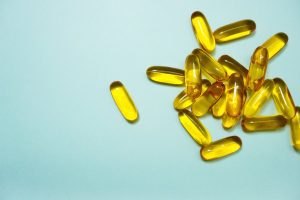
Many people achieve good results through vitamin supplements such as D3 and K2. However, it’s always wise to check with your doctor regarding any supplements to make sure there are no conflicts with other medications you are taking.
Poor Vitamin K intake is linked to low bone mass, osteoporosis, and fracture risk. According to a study from The National Library of Medicine: “In the past decade, it has become evident that vitamin K has a significant role to play in human health that is beyond its well-established function in blood clotting. There is a consistent line of evidence in human epidemiologic and intervention studies that clearly demonstrates that vitamin K can improve bone health. Human intervention studies have demonstrated that vitamin K can not only increase bone mineral density in osteoporotic people but also actually reduce fracture rates. Further, there is evidence in human intervention studies that vitamins K and D, a classic in bone metabolism, work synergistically on bone density.”
Unfortunately, most of us do not get enough of this vitamin through our diets. Although Vitamin K2 is primarily produced by bacteria in the gut, it is also found in small amounts in dairy products, grass-fed meats, and in greater amounts in a few fermented foods like the Japanese soybean product natto, as well as in some cheeses.
Supplementation may be necessary to meet our body’s need for this essential vitamin. The two main forms of K2 are MK-4 and MK-7. Both MK-4 and MK-7 can promote healthy bone lab markers and bone density. However, MK-4 has been shown in randomized controlled clinical trials to reduce fractures, whereas MK-7 has not. The research overwhelming suggests supplementing with with 45mg/day of MK-4 for reducing fracture risk.
If you are a woman of any age, please talk with your healthcare provider about supplementing with Vitamin K2. Always check with your healthcare provider before beginning any supplementation.
VITAMIN D3
According to the Mayo Clinic, Vitamin D regulates many cellular functions in your body and is an important nutrient your body needs for building and maintaining healthy bones. That is because your body can only absorb calcium, the primary component of bone when vitamin D is present. As well, its anti-inflammatory, antioxidant, and neuroprotective properties support immune health, muscle function, and brain cell activity. You can get your Vitamin D from natural sun exposure, as well as in foods such as egg yolks, mushrooms, beef liver, and saltwater fatty fish like salmon, tuna, and mackerel. If you are not getting enough sun exposure, or are having trouble absorbing enough Vitamin D, have your healthcare provider check your Vitamin D levels with a simple blood test.
As a supplement, the recommended daily amount of vitamin D is 400 international units (IU) for children up to age 12 months, 600 IU for people ages 1 to 70 years, and 800 IU for people over 70 years. Of course, if you are deficient, your healthcare provider may recommend a higher dose.
CALCIUM FROM FOOD
You have always been told as a woman; you should take a calcium supplement for your bone health. However, did you know that studies link calcium supplementation to a 15% increased risk of cardiovascular disease and coronary heart disease in otherwise healthy post-menopausal women? Yes, we do need calcium for our bones, but the best way is to focus on eating whole foods that are high in calcium, such as broccoli, green vegetables, seeds, cheese, yogurt, kale, Bok choy, salmon, beans, organic soy foods, figs, oranges, and sardines. As well, I recently discovered that Nettle Leaf Tea and unsulphured blackstrap molasses are both high in calcium. Aim for 1,200 mg a day of calcium from food. A great resource for eating a calcium-rich diet is the book by Dr. Laura Kelly & Helen Bryman Kelly: The Healthy Bones Nutrition Plan and Cookbook: How to Prepare and Combine Whole Foods to Prevent and Treat Osteoporosis Naturally .
Protein & Healthy Fats

Don’t neglect the opportunity to improve you bone density via healthy food choices. Including wild-caught salmon and healthy servings of greens, nuts, seeds, and olive oil.
According to studies at PubMed “Protein may play a beneficial role in the prevention of bone loss and in slowing down osteoporosis. The effect of dietary protein may be different in older adults compared to younger adults, since this population has a greater need for protein” the study went on to say, “Qualitative evaluation showed a positive trend between higher protein intakes and higher femoral neck and total hip BMD. Meta-analysis of four cohort studies showed that higher protein intakes resulted in a significant decrease in hip fractures (pooled hazard ratio: 0.89; 95% confidence interval: 0.84, 0.94). This systematic review supports that a protein intake above the current RDA may reduce hip fracture risk and may play a beneficial role in BMD maintenance and loss in older adults.”
Focus on high-quality food-based sources of protein, such as wild-caught salmon, organic antibiotic-free chicken, grass-fed beef, pasture-raised eggs, yogurt, and nuts.
Including healthy fats such as olive oil, avocado, nuts, seeds, and wild-caught fish is also beneficial to your over-all health.
Of course, if you are eating too much junk food and not enough foods naturally occurring in vitamins and minerals, this means that your body will have to pull these nutrients out of the bones where they can be utilized as needed. When nutrients are removed from the bones, it causes them to become weak and frail.
Now that we have covered some basic nutrition to support your bones, let’s look at how movement and exercise can support your bone strength and density. Be aware that although swimming and biking are great for an aerobic workout and cardiovascular health, they are not effective for bone health, as they are not weight-bearing.
Some of the best exercises for bone health are as follows:
Weight-bearing exercises:
According to Harvard Health, “Numerous studies have shown that weight-bearing exercise can help to slow bone loss, and several show it can even build bone. Activities that put stress on bones stimulate extra deposits of calcium and nudge bone-forming cells into action. The tugging and pushing on bone that occur during strength and power training provide the stress. The result is stronger, denser bones.”
You will want to engage in a strength training program that hits all the major muscle groups to ensure that the bones of your hips, wrists, spine, and ribs are targeted since these are the areas that are most likely to fracture. This includes using free weights, weight machines at the gym or doing floor exercises to gain strength. Pilates and Yoga can also be beneficial, just be careful, as according to the Cleveland Clinic, “Exercises that keep your spine in a straight or slightly arched position are generally safer than exercises that involve bending forward. That is because most spine fractures occur in a flexion-based (forward bending) position.
If you have already had an osteoporotic fracture, avoid exercises that involve forward bending, side bending and rotating the trunk. Proper strengthening of your lower abdominal and back muscles will also help to attain the optimal spinal position.”
Rebounding on a Trampoline:
What is especially wonderful about this type of exercise, is that while you are working leg muscles, and building endurance, as well as bone density, rebounding is gentle on your joints and gives you a great cardio work out without stressing your body. It is truly low impact and a fantastic work out for people of all ages. The benefits are numerous.
Rebounding is a type of cardio/aerobic exercise performed on a mini trampoline. It has been around for over 50 years, but became more popular after NASA found, through research, that jumping on a trampoline helped astronauts once they returned from space to regain muscle mass and bone density. As a heads up, if you are experiencing pelvic floor issues, you should speak with your doctor before beginning a rebounding routine.
Vibration Therapy:
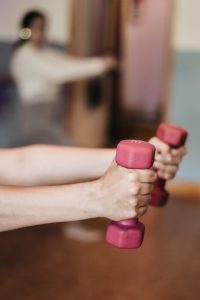
In addition to vibration therapy, do not neglect the benefits accrued from using free weights, weight machines at the gym or doing floor exercises to gain strength.
Vibration therapy, also known as whole-body vibration (WBV), is a form of physical therapy or exercise that involves using mechanical vibrations to stimulate various parts of the body. It has gained popularity in recent years due to its potential benefits for fitness, rehabilitation, and overall well-being. There are different types of vibration therapy, but the most common method involves using a vibrating platform or device.
During vibration therapy, a person typically stands, sits, or lies on the vibrating platform or uses a handheld vibrating device. The platform emits rapid and controlled vibrations, which are then transmitted to the body. The vibrations can be either side-alternating (oscillating) or vertical (up-and-down).
The main principle behind vibration therapy is that the mechanical vibrations cause the muscles to contract and relax rapidly. This involuntary muscle activity is believed to provide several potential benefits, including:
- Muscle strength and flexibility: Vibration therapy can help improve muscle strength and flexibility, especially when combined with targeted exercises.
- Bone density: Some studies suggest that vibration therapy may have a positive effect on bone density, potentially benefiting individuals with osteoporosis or at risk of bone-related issues.
- Circulation: The vibrations can improve blood circulation in the body, leading to potential benefits for cardiovascular health.
- Balance and stability: Regular use of vibration therapy has been linked to improvements in balance and stability, which can be beneficial for athletes and older adults.
- Rehabilitation: Vibration therapy is sometimes used as a part of physical therapy programs to aid in the recovery process after certain injuries or surgeries.
- Pain reduction: Some individuals report that vibration therapy helps reduce muscle soreness and discomfort.
- It’s important to note that while some research supports the potential benefits of vibration therapy, more studies are needed to fully understand its long-term effects and determine the best practices for various conditions. Additionally, vibration therapy might not be suitable for everyone, and individuals with certain medical conditions should consult their healthcare provider before using this therapy.
As with any form of therapy or exercise, it is essential to use vibration therapy safely and appropriately, following guidelines from qualified professionals or manufacturers to avoid injury.
Not to be the bearer of bad news, but if you already have osteoporosis, these are exercises you should avoid according to Healthline.com:
- Sit-ups and sit-up variations that involve spinal flexion may put you at risk of injury.
- Yoga can be beneficial for people with osteoporosis, but certain positions may put your spine under stress. It is a good idea to avoid positions that put your spine into a rounded position or that involve a large amount of twisting.
- Golf and tennis swings both involve rotation through your trunk at high speeds. This fast, twisting motion may put you at risk of a spinal fracture. Both sports may also increase your risk of wrist injuries, which are common among people with osteoporosis.
- Lifting heavy objects can put stress on your lower spine, especially if you have poor lifting form. Many people round their backs when lifting objects from the floor instead of lifting with their legs. This stress on your back may put you at risk of a spinal fracture.
- Activities that involve running and jumping put a large amount of force on your bones and joints when your feet hit the ground. Check with your doctor, as you may still be able to do these.
- Skiing and snowboarding have a high risk of injury. In a 2022 study Trusted Source, researchers found that the most frequent vertebra fracture location was in the lower back for snowboarders and skiers.
- Horseback riding has a high risk of falling, which may put you at risk of fracture. Repeated vibrations from riding may also increase your risk of fracture.
- Contact sports come with a high risk of injury for people with osteoporosis. (These might include: hockey, skating, rugby, soccer, and American football.)
Some Good News:
Studies are continuing in holistic ways to support healthy bones. I discovered and am currently participating in a course by The Bone Coach, which is guiding me in ways to improve my bone strength through understanding possible contributors to my bone loss, suggesting appropriate lab tests, and guiding me with my nutrition and exercise. The Bone Coach offers a FREE MASTERCLASS which I highly recommend. Just click on the highlighted links for more info.
It is important that as post-menopausal women, we are proactive in keeping our bodies and bones healthy. We not only desire to have a long life-span, but a long health-span as well. We want to stay in our homes and be independent as long as we possibly can, without the risk of fracture and debilitation. We do not want to be suffering with preventable health concerns. We want to enjoy a magical long and healthy life!
Please Note: This is NOT medical advice nor should it be used as such. Our hope is that you have information to take to your medical practitioner for an open dialogue on your healthcare needs.
*This article contains Affiliate Links.
Lorraine Miano, NABBW’s Holistic Menopause Health Associate, is an Integrative Certified Health Coach certified in hormone health 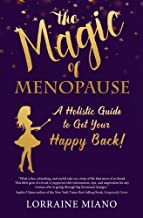 and author of the book, “The Magic of Menopause: A Holistic Guide to Get Your Happy Back!” She is passionate about working with women in all phases of menopause – peri menopause through post menopause – with the clear goal of helping us overcome weight, metabolism and aging concerns, so we can have more energy, less stress, and feel comfortable in our own skin.
and author of the book, “The Magic of Menopause: A Holistic Guide to Get Your Happy Back!” She is passionate about working with women in all phases of menopause – peri menopause through post menopause – with the clear goal of helping us overcome weight, metabolism and aging concerns, so we can have more energy, less stress, and feel comfortable in our own skin.
Lorraine’s goal is to help Western women understand that menopause can – and should – be viewed as the time we women come into our own, finally becoming the influential and powerful beings we were meant to be. She reminds us that in non-Western cultures — from Japanese to Greek, Native American, Indian, Chinese, Korean and African societies, elder women are held in high esteem – and appropriately venerated for their wisdom. You can learn more about Lorraine and her positive approach to aging on her website: TheMagicofMenopause.com
Lorraine’s favorite mantra is “Menopause is NOT an ending. It IS a new beginning.” If you are a woman searching for support, resources, and a whole lotta love, please join Lorraine’s private menopause support group: Making Menopause Magical.
